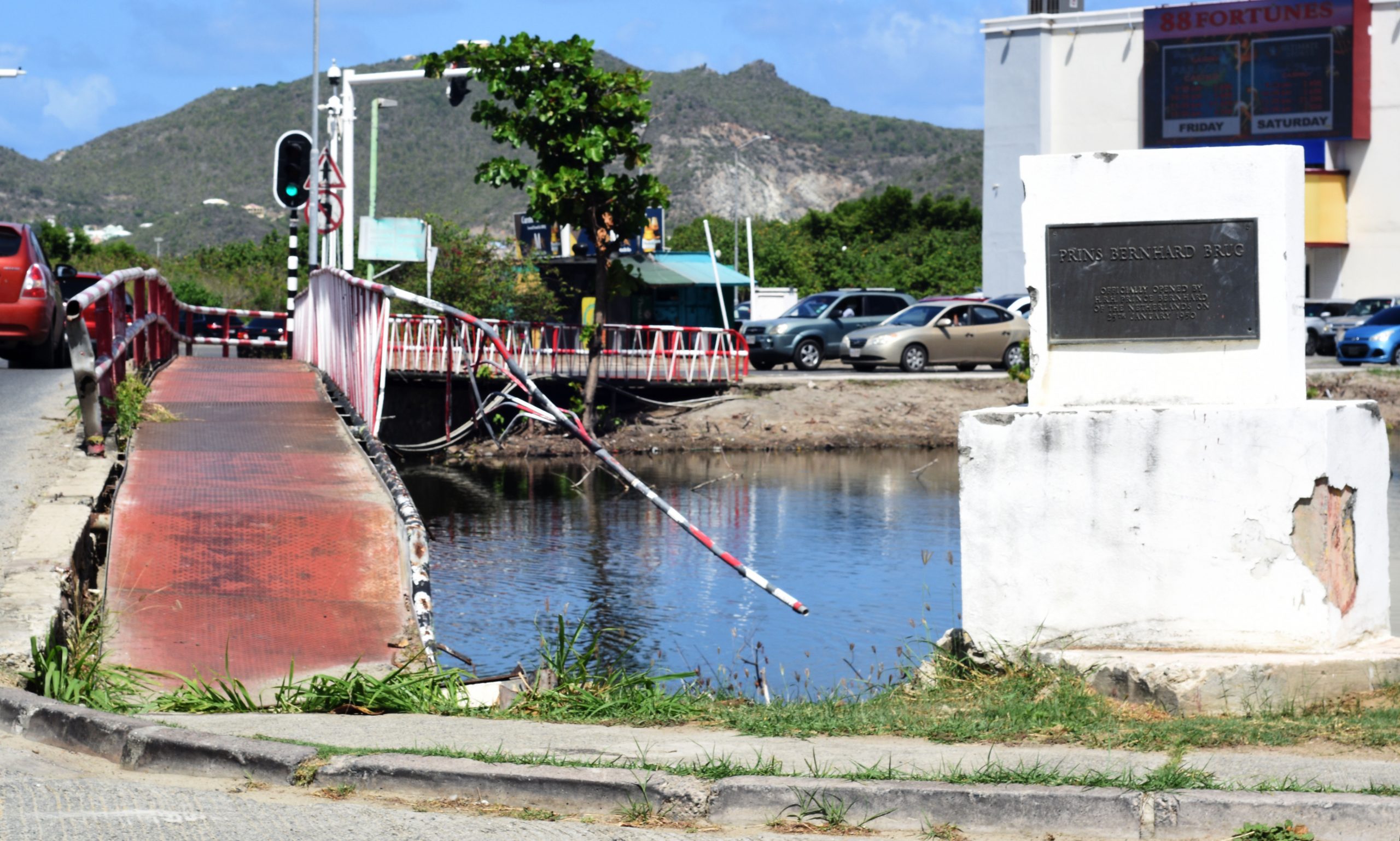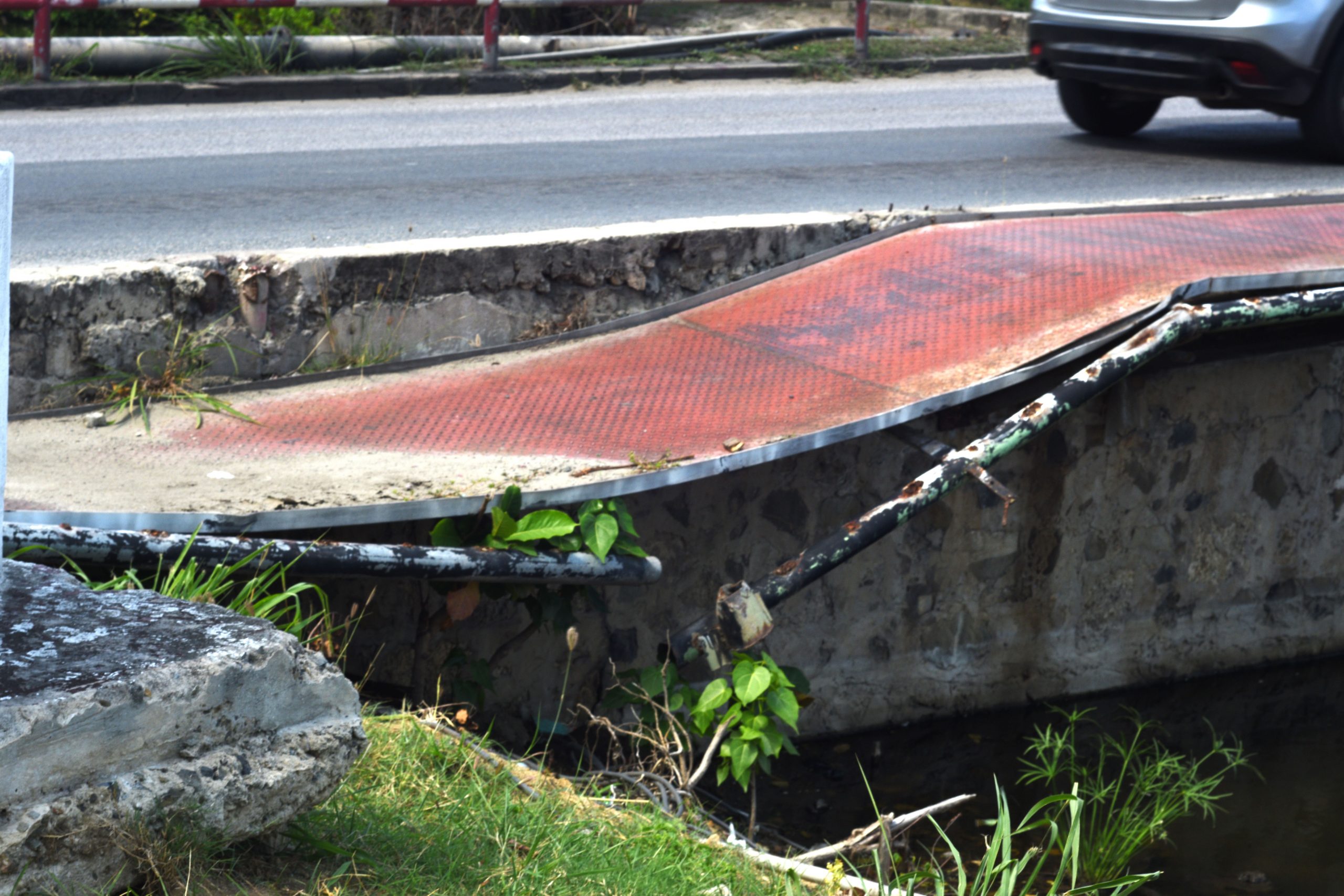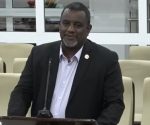Save the Prince Bernhard Bridge (Updated)
PHILIPSBURG — Millions of people must have crossed the Prince Bernhard Bridge across the Fresh Pond in the course of the past ninety-odd years. The bridge is a part of St. Maarten’s patrimony, but information reaching us from within the Ministry of VROMI indicates that there are plans to remove the iconic structure and to replace it with a roundabout. That cannot be right.
Recently, Lady Grace interviewed VROMI-Minister Egbert Doran on her radio program The Breakfast Lounge. While most of the attention went to Doran’s attack on Member of Parliament Raeyhon Peterson, he also made some remarks about the bridge that leave its future at least a little bit unclear.
Lady Grace asked the minister about the removal of mangroves near the bridge that had triggered concerned questions from some citizens.
Doran said that there are plans to restore the damaged bridge and that his ministry had actually published a tender for it around six weeks ago. Only three parties bought the tender documents and at the date of the tender nobody showed up. Doran said that his ministry then updated the terms of reference for a new tender that will be published shortly. “Even before the mangroves were removed we were busy with the terms of reference to restore the bridge,” he said.
A press release from the ministry shows that the removal of mangroves that blocked sightlines for traffic began on May 25. Doran said that there are plans “to plant mini mangroves” and to erect platforms on both sides of the bridge for bird watching. The press release clarifies that the ministry will plant green buttonwood mangroves on the location.
Restoring the bridge or removing it altogether? That seems to be the question now. In 2017 Christophe Emmanuel was minister of VROMI and he awarded a controversial contract to a company called Soualiga Infrastructure. The contract was awarded for an amount of 149,768.25 Antillean guilders ($83,669). Accidental or by design, it was just below the threshold of 150,000 guilders for projects that require the approval from the Council of Ministers.
The proposal to repair the pedestrian part of the bridge reached the ministry on October 5, 2017, and the contract was awarded six days later. The ministry paid 50 percent of the contract price in advance. Three months after Soualiga Infrastructure received the contract, the work still had not been done.
When Emmanuel’s successor Miklos Giterson looked into this matter, he found that Soualiga Infrastructure belongs to Jeffrey Bremer, according to Giterson the husband of Marisha Richardson, who happened to be chief of staff at Emmanuel’s ministry at the time.
Currently, that repair job is neither here nor there, because the bridge is once more badly in need of restoration.
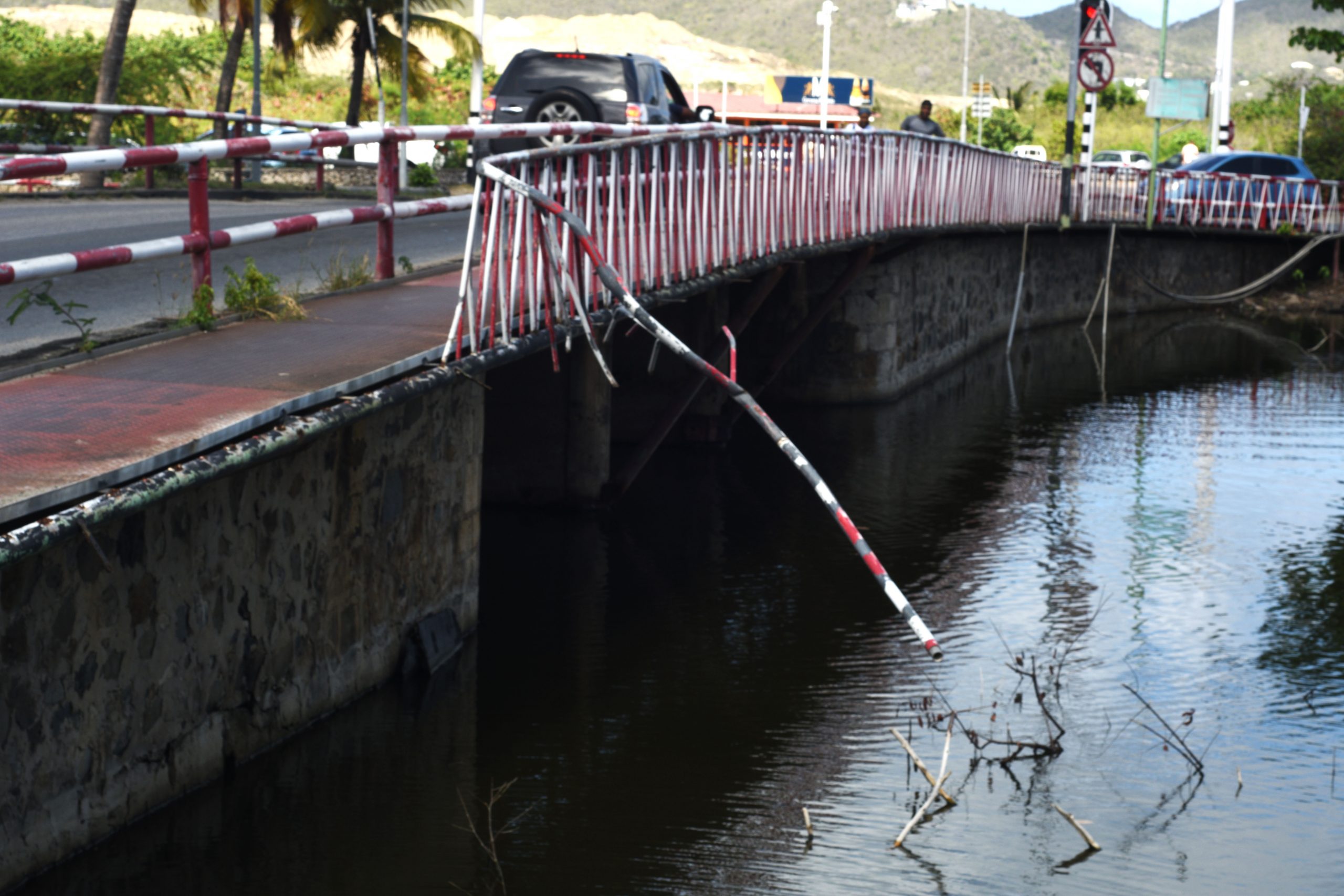
The question is of course whether the ministry will repair the bridge. In that context it is interesting to learn whether the government considers the bridge a monument or, at least, part of the country’s cultural heritage.
St. Maarten is no stranger to bridge building. It started back in the eighteenth century, though most bridges were constructed in the early twentieth century. In his book History of St. Maarten and St. Martin, author Johan Hartog writes that there was already a bridge over the Fresh Pond in 1930. At the time, it was known as the Fresh Pond Bridge.
When it was rebuilt in 1950, the bridge received the name it still has today: the Prince Bernhard Bridge.
According to Hartog’s book, Prince Bernhard flew on January 25, 1950, to St. Maarten in a plane that he piloted and he opened the “nearly completed bridge across the Fresh Pond.”
Hartog’s book created the impression that the prince flew from the Netherlands to the Antilles in his plane, but that cannot be correct. After the Second World War, Bernhard bought a Douglas DC-3 airplane from the American air force for $50,000. The range of this plane that is also known as a Dakota, is 2,400 kilometers, while the distance between Schiphol Airport and Philipsburg is more than three times as much: 7,590 kilometers.
There is yet another piece of information that puts Hartog’s observation in question. In 1950 Polygoon Journal made a film about a trip Prince Bernhard made to the Caribbean, Suriname, Canada, and several South American countries. The trip began on January 2, 1950, and ended on March 19.
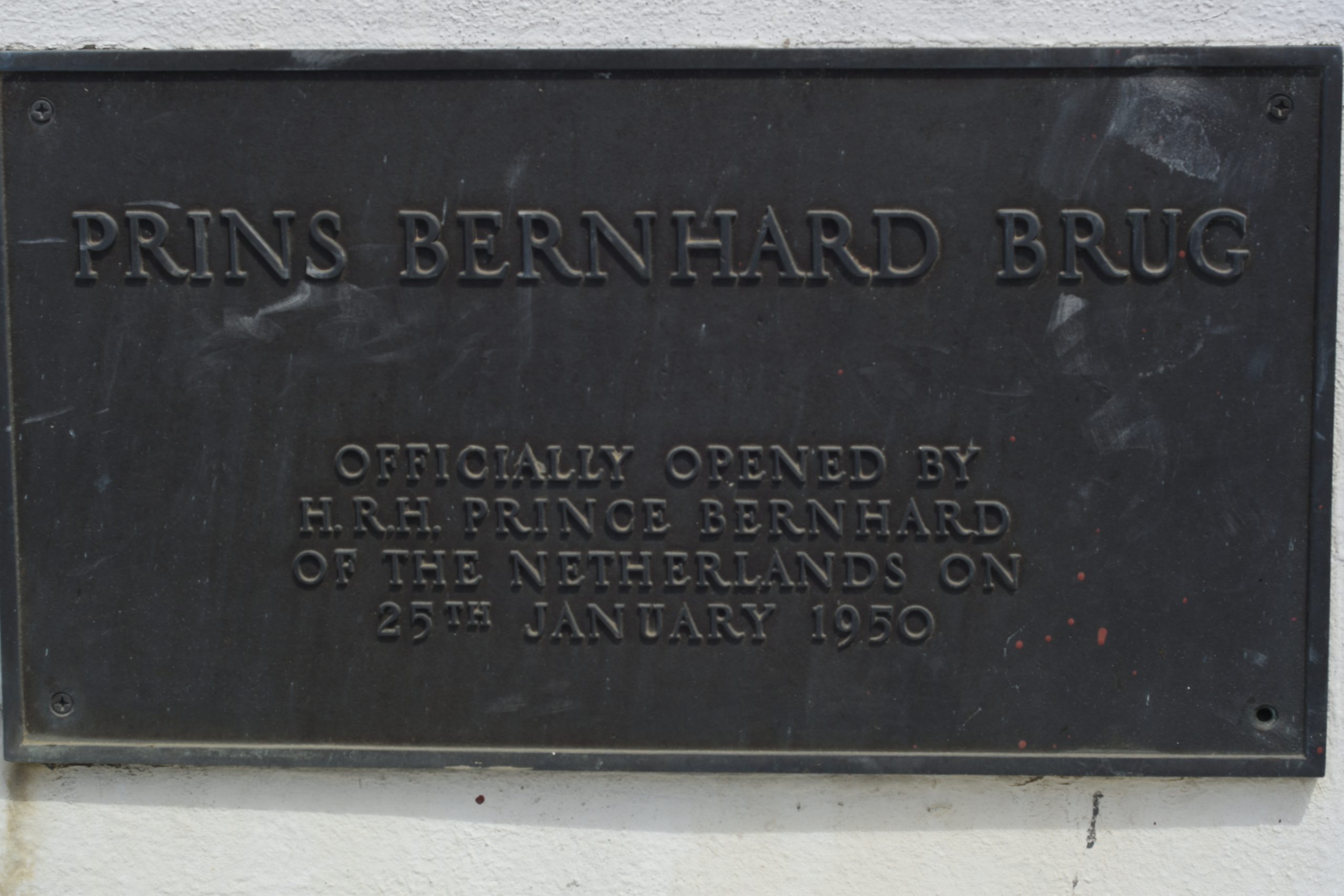
Bernhard left the Netherlands on board the aircraft carrier Karel Doorman, which was flanked by the Jacob van Heemskerck and the submarine hunter Johan Maurits van Nassau.
A bit more than fifteen minutes into the Polygoon Journal movie, the story mentions Bernhard’s visit to St. Maarten, without offering a specific date. The description of the visit only mentions this: “In Philipsburg school kids parade before the prince and they bring him a serenade.” There is no mention of Bernhard opening the bridge across the Fresh Pond.
The film spends just fifteen seconds on the prince’s visit, before reporting that he flew to Bonaire in his Dakota. The plane must therefore have been aboard the Karel Doorman.
Hartog maintains that Bernhard inaugurated the bridge while it was still under construction. Whatever the truth may be, the bridge has been an intrinsic part of St. Maarten’s infrastructure for more than ninety years.
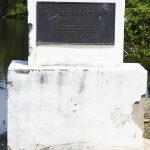 Bridges have also caught the attention of archeologist Jay Haviser and former museum-director Elsje Bosch. Together they wrote a paper about the story of bridges on the island.
Bridges have also caught the attention of archeologist Jay Haviser and former museum-director Elsje Bosch. Together they wrote a paper about the story of bridges on the island.
The authors state that “the cultural significance of the St. Maarten bridges is outlined from a perspective of cultural connectivity among the various communities on the island.”
Haviser and Bosch point out that bridge-building on the island dates back to the eighteenth century, but that most bridges were constructed during the twentieth century. The first version of what later became the Prince Bernhard Bridge had two ornamental stone arches, four central pillars and wooden handrails. The top of the arches was just one stone thick.
A photo from 1930 shows more wooden supports in the central water opening. By that time, the stone pillars had been removed. In another photo, taken before 1950, the significantly raised roadbed across the bridge is visible.
Interestingly, Haviser and Bosch found that in the early twentieth century a long wall was constructed on the Great Salt pond side of the bridge. It ran parallel to the bank of the Fresh Pond and became a promenade for afternoon- and weekend walks. “It served as a social gathering area and was referred to as the Long Wall. The bridge was at that time popularly known as the Long Wall Bridge.” (Nowadays, the road that runs along the banks of the Fresh Pond is aptly called Long Wall Road).
Everything changed dramatically on January 25, 1950 (if historic recall is correct), when Prince Bernhard “opened the renovated version of the bridge with great pomp and ceremony,” Haviser and Bosch write.
The structure of the bridge changed as well: the wooden handrails were replaced by metal ones; the wooden support pillars were replaced by concrete ones and a new roadbed was constructed of reinforced concrete.
Asking the question how St. Maarten takes care of its monuments and its cultural heritage is a painful one. Because the obvious answer is: it doesn’t.
The Executive Council of the island territory received a plan of approach for monument policy in June 2002. A year later it received the definitive version of the inventory of local monuments. A report estimated that conservation and restoration of monuments would cost the territory a bit more than 22.8 million guilders (price levels of 2006); a pretty sum that equals almost $12.8 million and that was clearly a bridge too far for the decision makers at that time.
In 2009 PREAM consultants and Architects produced a Monument policy plan that begins with a quote from Loekie Morales: “Monuments are the pearls of our common heritage that not only contain history and culture, but also the Zeitgeist of our ancestors. We have to cherish and protect that for current and future generations.”
When the Democratic Party published its governing program for the period 2007-2011 it paid attention to the protection of the island’s patrimony. But when a new coalition took office in 2009 (National Alliance with the support of former DP-member Theo Heyliger) it did not pay specific attention to this issue.
All the efforts to arrive at consensus about the protection of the island’s patrimony – like the Greater Great Bay Development Perspective of 2003 and the Integrated Cultural Policy Framework of 2007 – have so far amounted to nothing, even though the framework mentioned as one of its objectives the promotion of legislation for the protection of cultural heritage.
It is ironic that right now the National Alliance is once more in the governmental driver’s seat together with the United People’s party. The Prince Bernhard Bridge offers these parties an excellent opportunity to correct mistakes and oversights from the past by placing the bridge on the list of protected monuments.
It is good to remember that the roundabout the government apparently wants to build on the bridge location is part of the ill-fated plan for the construction of a ring road. If our memory serves us right, we seem to remember that a roundabout at the location of the current traffic lights was part of those plans. There is plenty of space right there to create a roundabout, do away with the traffic lights (that almost never work anyway) and to preserve the Prince Bernhard Bridge for future generations.
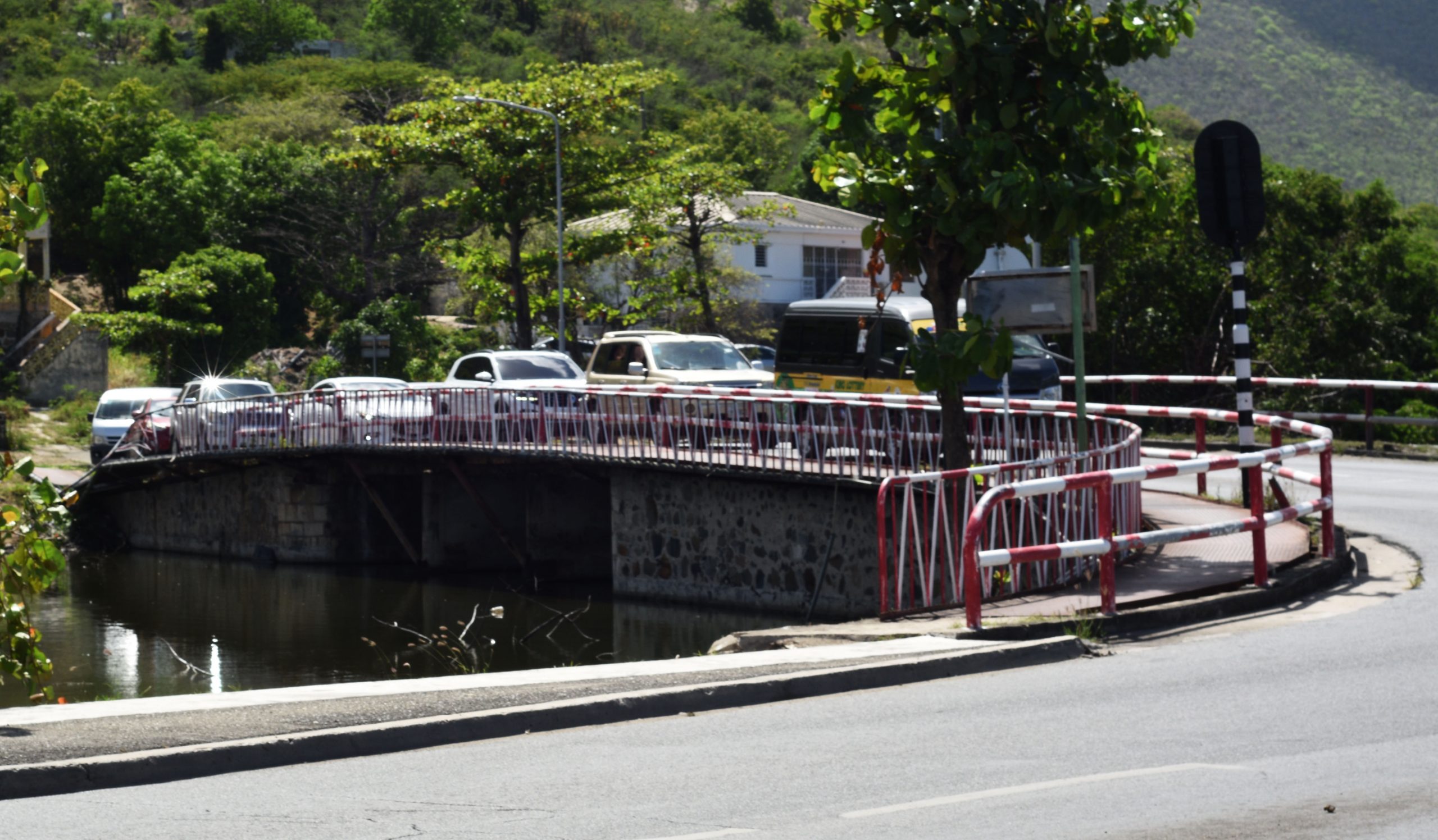
UPDATE:
An attentive reader of our article Save the Prince Bernhard Bridge let us know that the prince’s Dakota airplane indeed traveled to the west aboard the aircraft carrier Karel Doorman. The vessel arrived in San Juan, Puerto Rico, on January 16, 1950. There the prince’s plane was offloaded. It sustained a dent in the bodywork during the offloading.
Prince Bernhard then flew from Puerto Rico to St. Maarten and later on from there to Bonaire.
“There is no doubt that Hartog was correct,” our reader commented. “Polygoon probably did not find it noteworthy to mention this in the film they made.”
###
Related links:
Controversy surrounds renovation of the Prince Bernhard Bridge
COM press briefing July 27, 2022
Emmanuel says bridge repairs were completed in 2018
Emmanuel says coming after him will not change Ombudsman report












